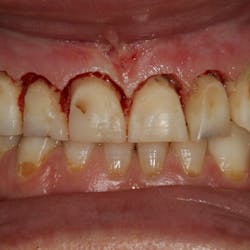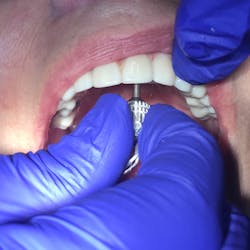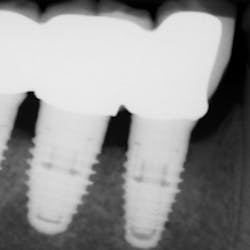“While genetic testing holds potential for clinical application in the future, clinical measurements remain the best approach to assessment of caries and periodontal disease at this time.”
The American Dental Association (ADA) announces new resources for dental professionals and the public related to genetics and oral health.
According to the ADA Council on Scientific Affairs’ Genetic Testing Workgroup, the ADA body that authored the genetic and genetic testing resource, “While genetic testing holds potential for clinical application in the future, clinical measurements remain the best approach to assessment of caries and periodontal disease at this time.” Clinical measurements include probing measurements and radiographic (x-ray) evaluations.
A predictive test for dental caries (the disease that causes cavities) or for periodontal disease does not currently exist; both of these are complex diseases with multiple gene and environmental risk factors. No gene to date has been identified that has as large an impact on periodontal disease as do environmental influences, such as smoking or diabetes, according to the resource.
There are commercially marketed tests that claim to measure risk of disease or susceptibility to future disease. These tests are either in the category of laboratory-developed tests or direct-to-consumer (DTC) tests. The Food and Drug Administration recently issued a press release on direct-to consumer genetic health risk (GHR) tests stating, “It is important that people understand that genetic risk is just one piece of the bigger puzzle; it does not mean they will or won’t ultimately develop a disease.”
The FDA is establishing criteria, called special controls, which clarify the agency’s expectations in assuring the tests’ accuracy, reliability, and clinical relevance. These special controls, when met along with general controls, provide reasonable assurance of safety and effectiveness for these and similar GHR tests.
The ADA’s resource on genetics and genetic testing explains basic genetic principles, genetic testing, and using genetic information in decision-making in dentistry. The summary is available on the ADA’s Oral Health Topics webpage for dental professionals and information for the public on this topic is available at MouthHealthy.org.
The not-for-profit American Dental Association is the nation's largest dental association, representing more than 161,000 dentist members. The ADA has advocated for the public's oral health and promoted the art and science of dentistry since 1859. Its state-of-the-art research facilities develop and test dental products and materials to advance the practice of dentistry and make the patient experience more positive. The ADA Seal of Acceptance long has been a valuable and respected guide to consumer dental care products. The Journal of the American Dental Association (JADA) is the ADA's monthly scientific flagship publication. For more information, visit ADA.org. For information on oral health, and prevention, care, and treatment of dental disease, visit the ADA’s consumer website MouthHealthy.org.
SOURCE: press release from the American Dental Association, April 27, 2017.








